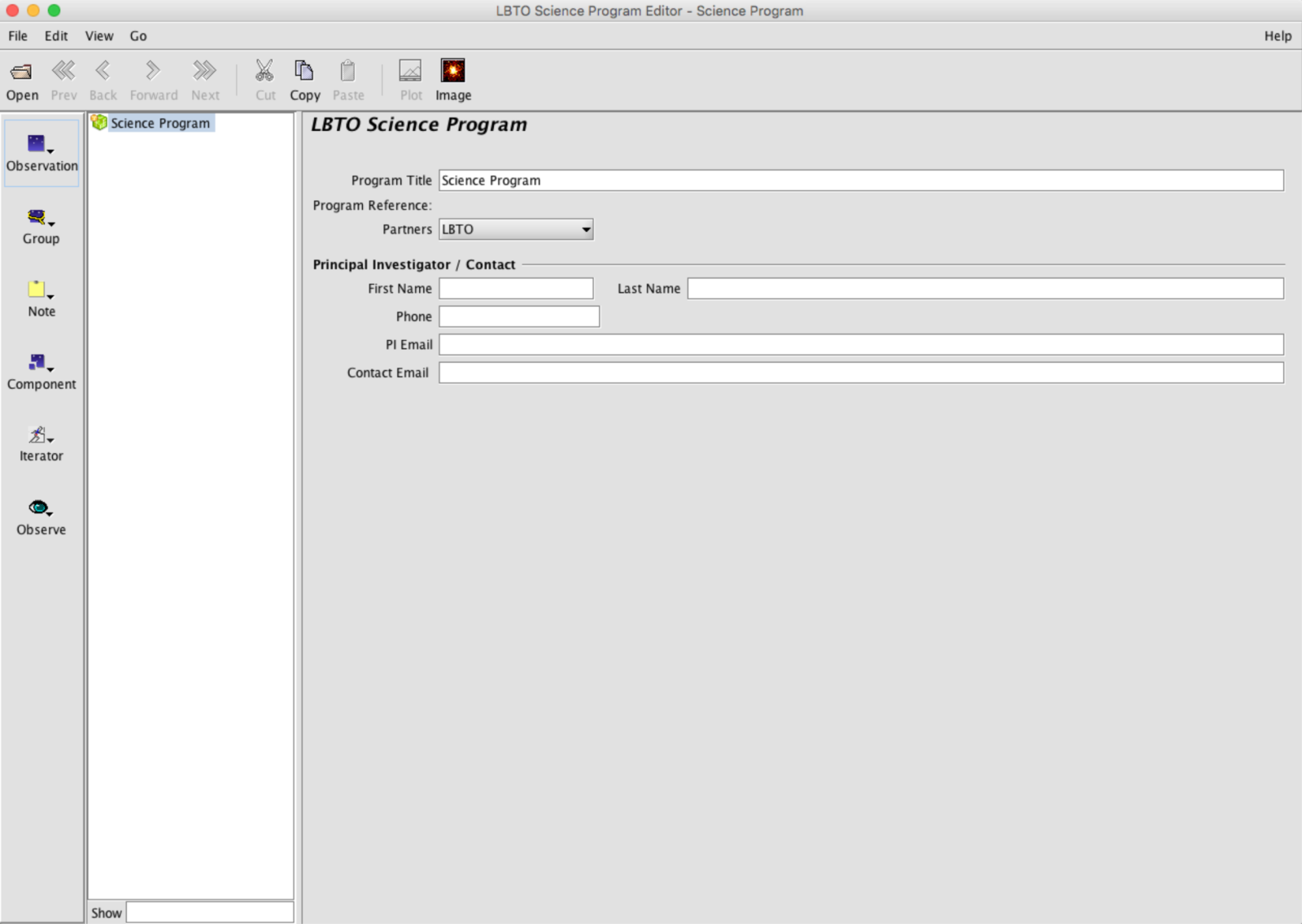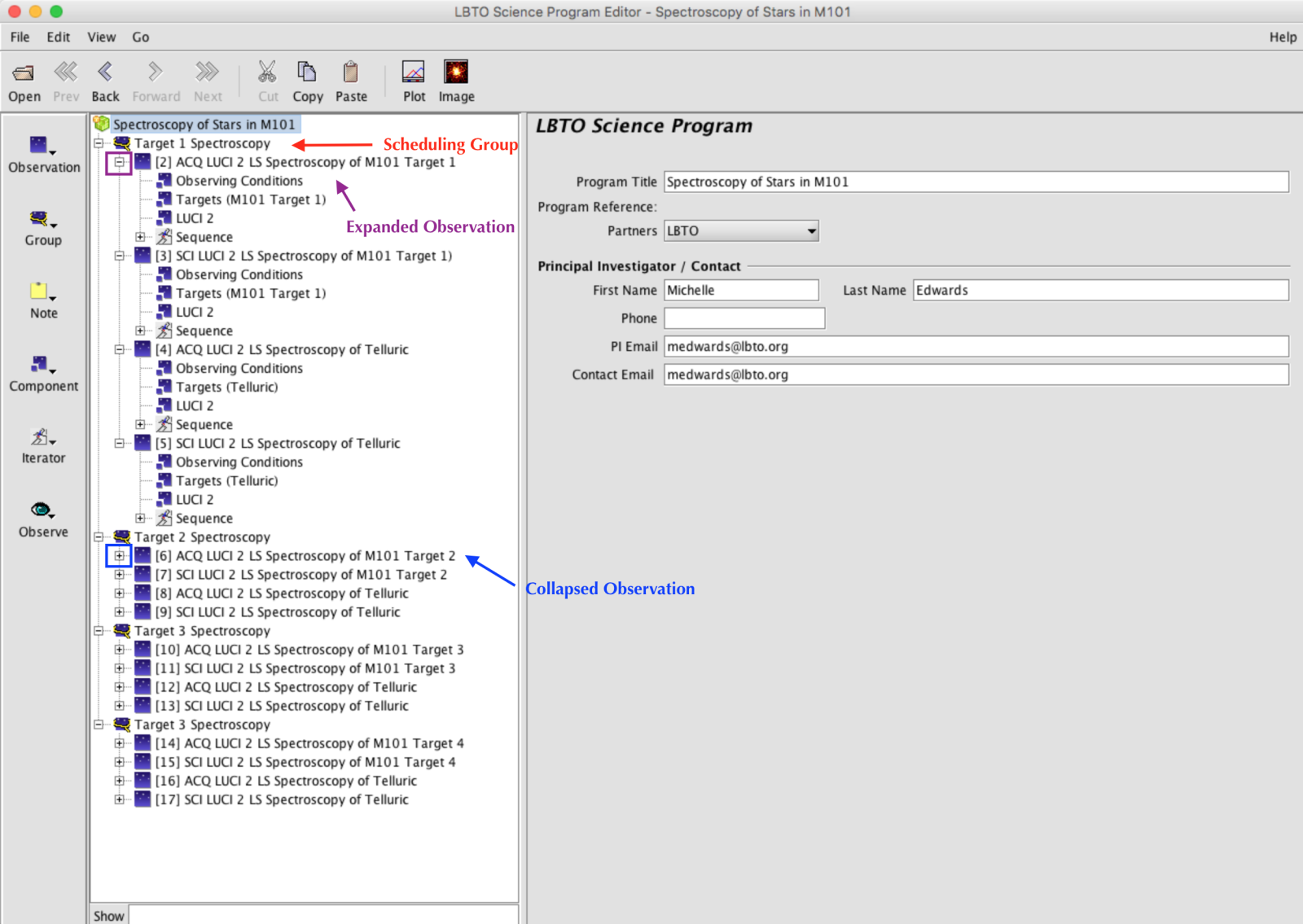OT Examples
In this page, we build walkthroughs of the many common types of observations. These walkthroughs assume that the user 1) knows which instruments and modes he/she would like to use 2) has calculated the total exposure times necessary and 3) has downloaded the OT and the OT libraries. It might be helpful to review the components of the Science Program Editor before working through these tutorials.
Getting Started:
The first step in common to all these tutorials is to create a new program. If you are opening the OT from your desktop, you will see the Observing Tool Home Window and should click on New Program at the bottom left.
If you are already running the OT and are in another science program, select File –> New Program from the Main Menu at the top of the OT.
You will now have an entirely empty Science Program:
One can think of the Science Program as an organizational structure, like a directory in a file system, that can contain many files or subdirectories. However, in the OT, the “files” are actually discrete observations that you would like to make with the telescope and they contain information about the target, dither patterns, instrument configuration, etc. This structure is showcased in the Science Program Tree.
Below is an example of a more complicated program created with the OT. There are four discrete groups, each containing the acquisition and spectroscopic observations of a target in M101 and the acquisition and set-up of an accompanying telluric. These groups are “scheduling groups” implying that all observations inside the group should be observed close together in time (i.e. scheduled together. Looking at one of the expanded observations in Target 1, one notices the observation is also built of several parts, or observation component,s that contain observing conditions, target information, instrument configuration, and dither patterns.
A user can add a Scheduling Group to any program by using the Group button on the Left Sidebar. Observations can either be added into the Scheduling Group or to any portion of the program using the Observation button, also on the Left Sidebar. Observations are defined by the Instrument, so if a PI is building a LUCI1 program, the Observations selected should be LUCI1 Observations.
However, to make this process simpler, so that PIs do not have to build and configure programs from scratch, LBTO has several libraries with templates that users can cut and paste directly into their own Science Programs. Directions on how to use these templates are below in the examples.




